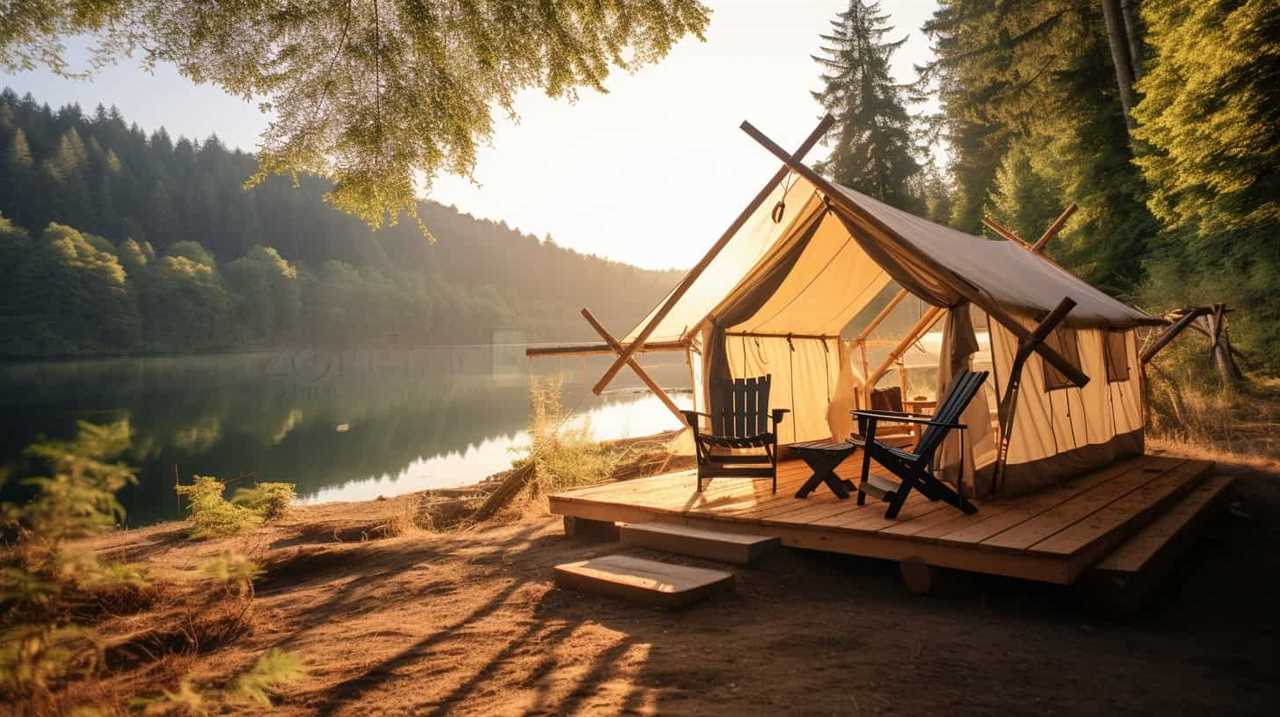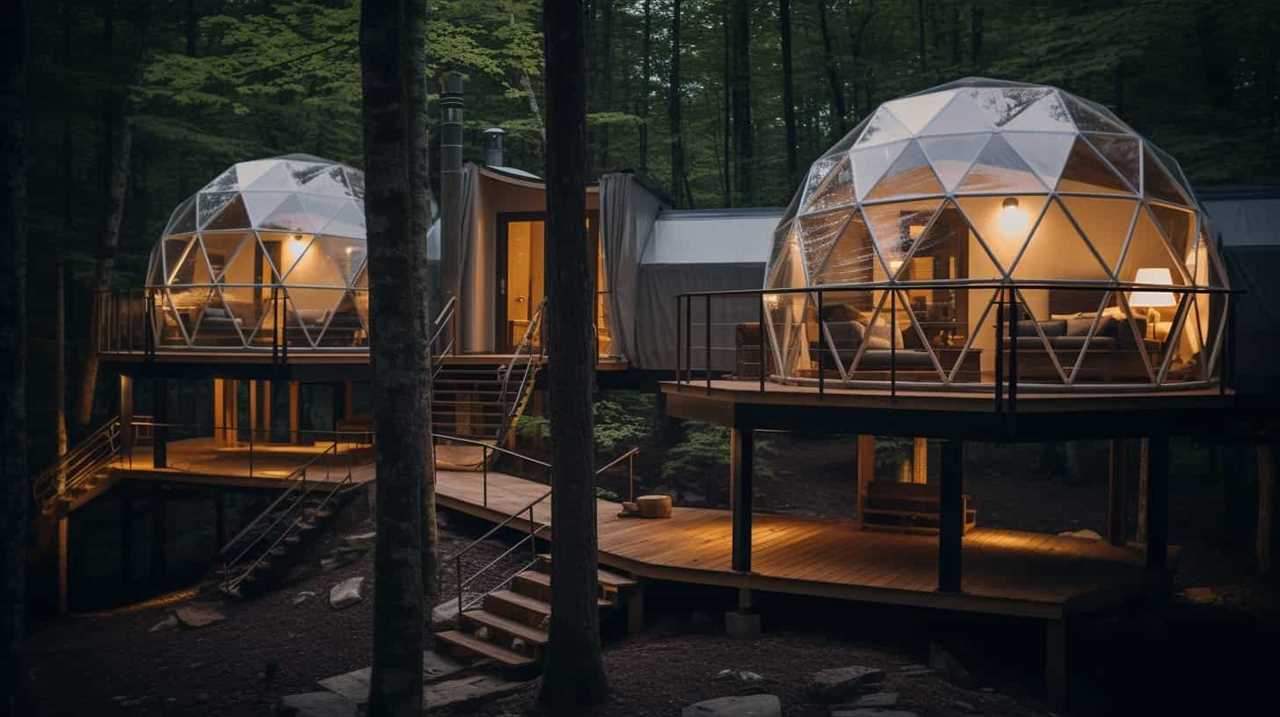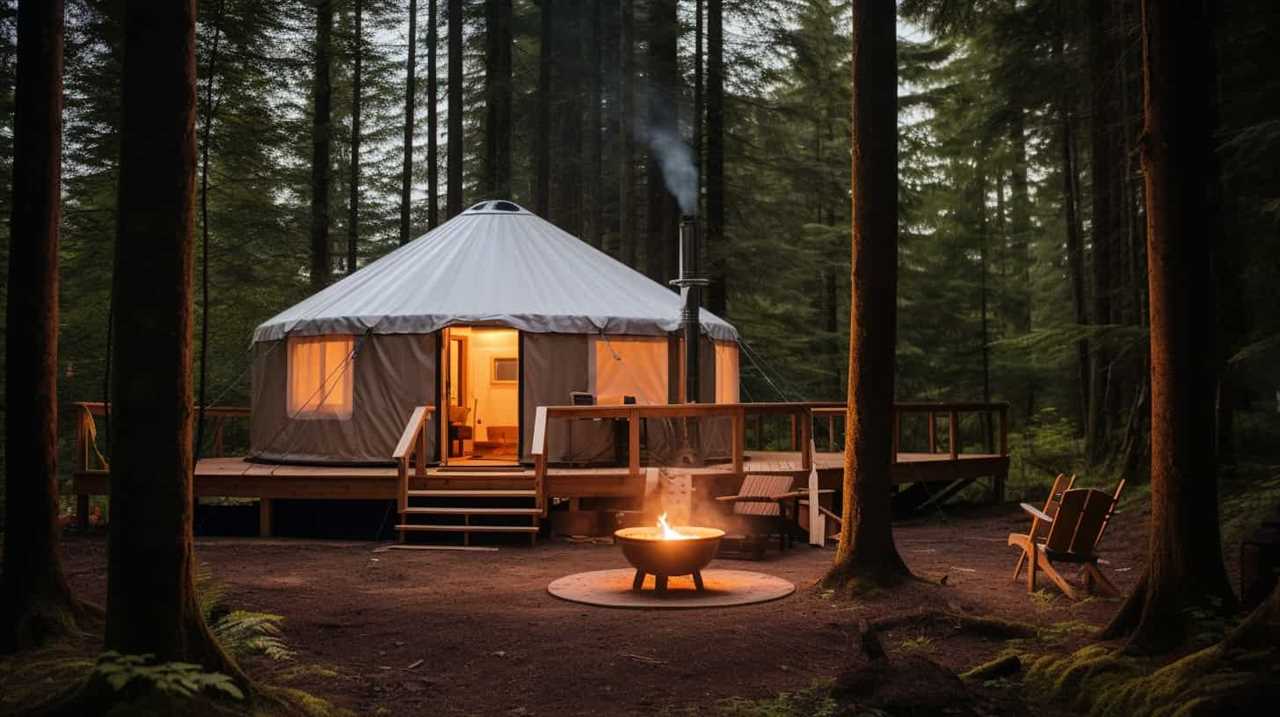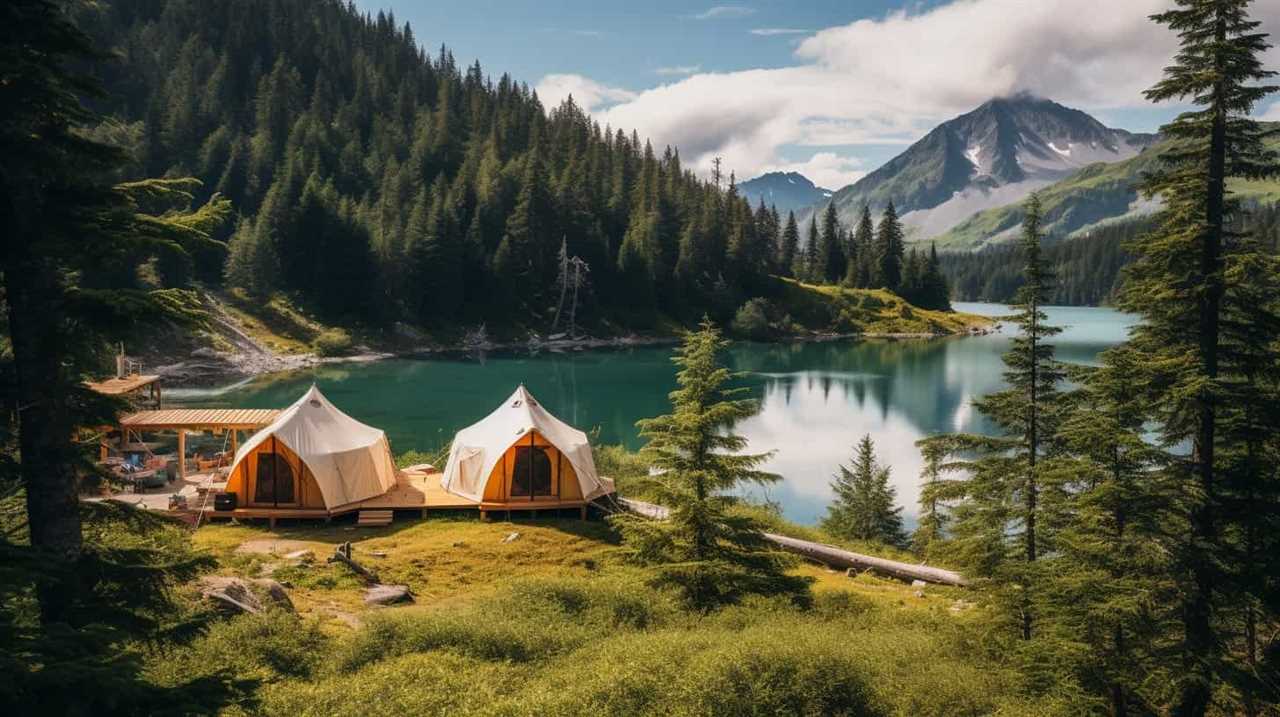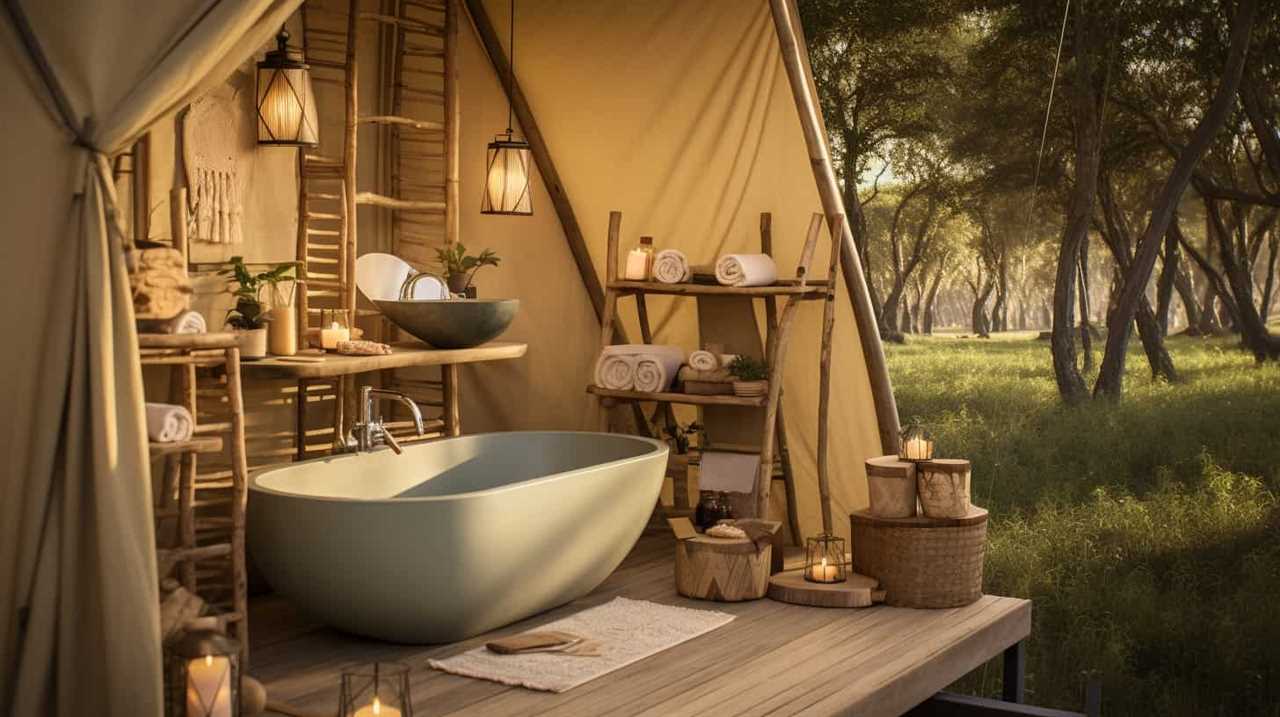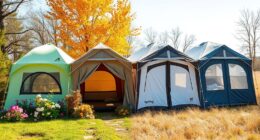Welcome to our guide on environmentally-friendly glamping with sustainable gear.
We’re here to help you make your outdoor adventures more sustainable and enjoyable. From choosing sustainable tents to using low-impact cookware and solar-powered lighting, we’ll provide you with practical tips to minimize your environmental impact while still enjoying the comforts of glamping.
With our guide, you’ll learn how to create a cozy, intimate experience in nature without leaving a trace.
Let’s dive in and make your next glamping trip eco-friendly!
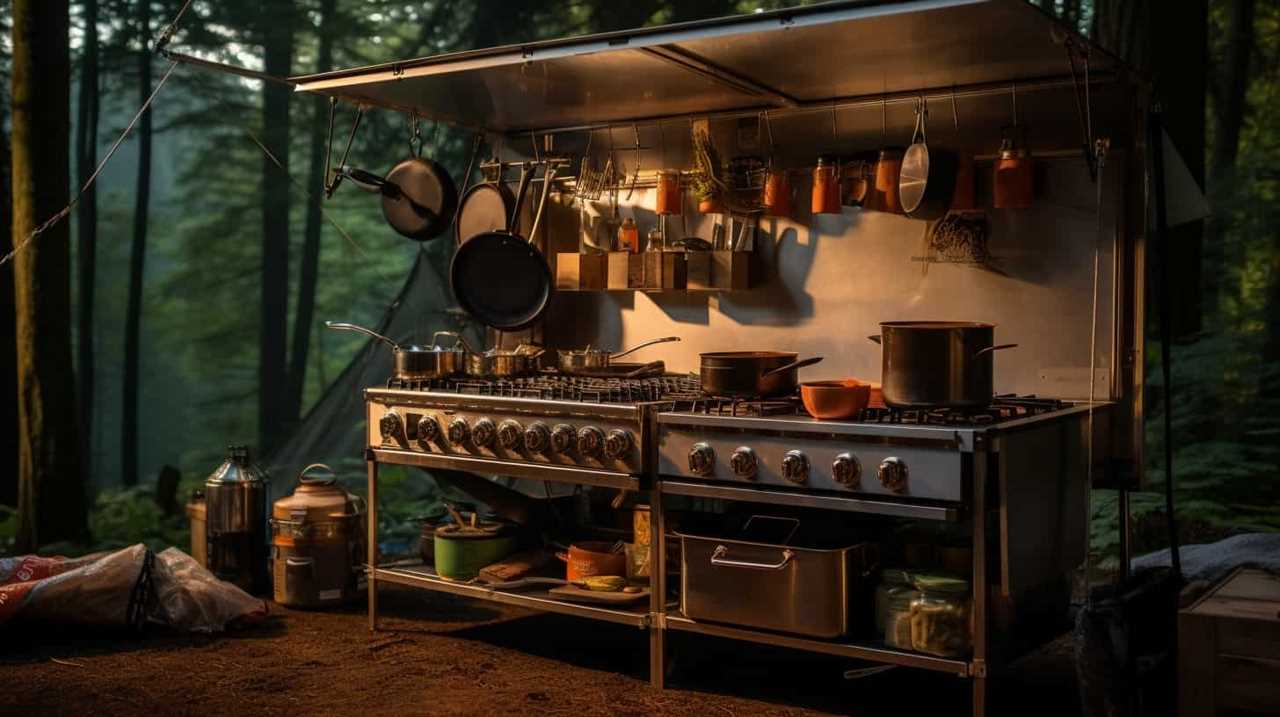
Key Takeaways
- Choose sustainable camping equipment made from recycled or organic materials.
- Prioritize durable and weather-resistant options for tents and sleeping bags.
- Opt for low-impact cookware options and solar-powered lighting solutions.
- Practice water conservation and sustainable hygiene practices, such as using eco-friendly toiletries and reusable products.
Choosing Sustainable Tents
When it comes to eco-friendly glamping, we prioritize choosing sustainable tents that are made from recycled or organic materials. These materials not only reduce our environmental footprint but also provide a comfortable and enjoyable camping experience.
Sustainable tent materials, such as recycled polyester or organic cotton, are becoming increasingly popular in the market. They’re durable, weather-resistant, and can be recycled or composted at the end of their life cycle.
In addition to the materials, eco-conscious tent designs are also essential. Features like energy-efficient LED lights, solar-powered charging ports, and rainwater harvesting systems can further enhance the sustainability of the camping experience.
Eco-Friendly Sleeping Bags
To continue our eco-friendly glamping journey, let’s now explore the importance of using eco-friendly sleeping bags. When it comes to sustainable insulation, there are a few options to consider.

- Down alternative fill: Look for sleeping bags that use synthetic insulation made from recycled materials, such as recycled polyester or nylon. These options provide excellent warmth without harming any animals.
- Organic cotton lining: Opt for sleeping bags with a lining made from organic cotton. This material is grown without the use of pesticides or chemicals, making it a more eco-friendly choice.
- Recycled shell fabric: Choose sleeping bags with a shell fabric made from recycled materials. This reduces waste and minimizes the carbon footprint of the manufacturing process.
- Biodegradable materials: Some sleeping bags are made from biodegradable materials, such as Tencel or bamboo. These options aren’t only eco-friendly but also offer excellent breathability and moisture-wicking properties.
- Responsible manufacturing: Look for brands that prioritize ethical and sustainable manufacturing practices, ensuring that their sleeping bags are produced with minimal impact on the environment.
By choosing eco-friendly sleeping bags with sustainable insulation and biodegradable materials, you can sleep comfortably knowing that you’re making a positive impact on the planet.
Now, let’s move on to our next topic: low-impact cookware options.
Low-Impact Cookware Options
Now let’s explore our options for low-impact cookware to enhance our eco-friendly glamping experience.
When it comes to cooking in the great outdoors, solar powered stoves are a fantastic choice. These stoves harness the power of the sun to heat your meals, reducing your carbon footprint and eliminating the need for traditional fuel sources. Not only are they environmentally friendly, but they’re also convenient and easy to use.
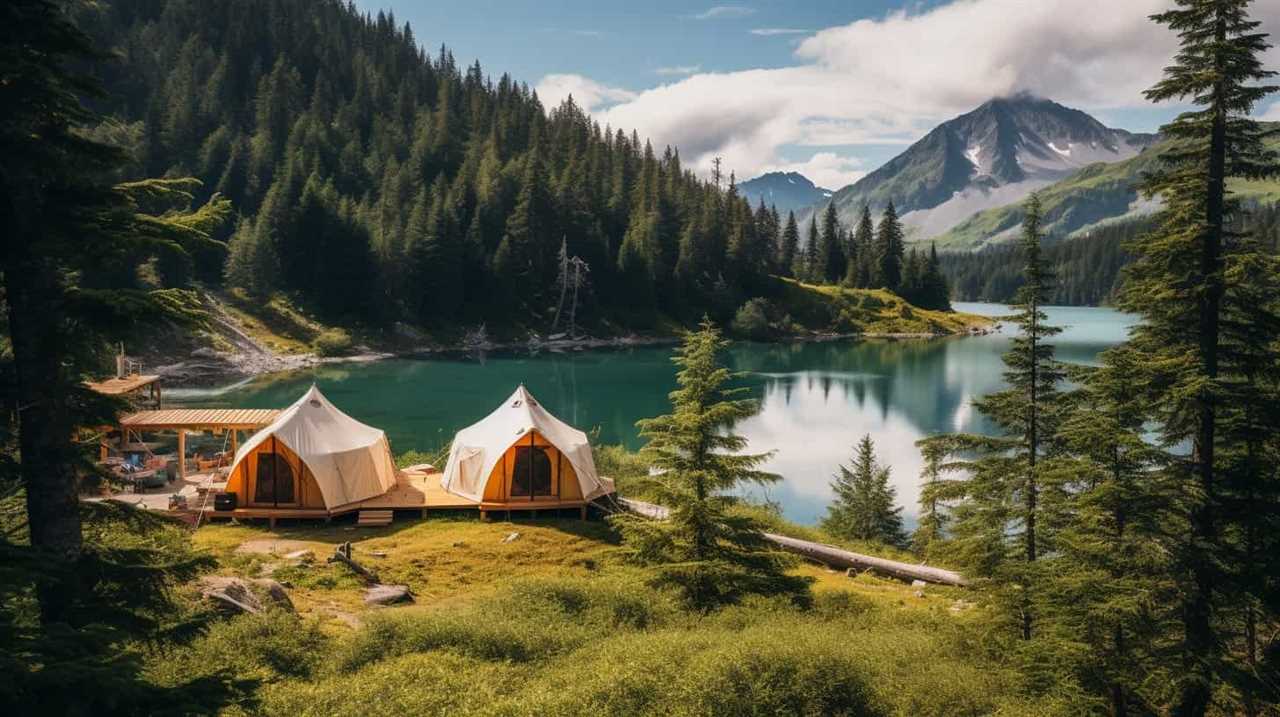
Additionally, using biodegradable dishware is another way to minimize our impact on the environment. These dishware options are made from natural materials that can break down over time, reducing waste and pollution.
Solar-Powered Lighting Solutions
When it comes to eco-friendly glamping, sustainable lighting options are a must. Solar-powered lighting solutions offer a practical and efficient way to illuminate your campsite while minimizing your carbon footprint.
Sustainable Lighting Options
We have found that solar-powered lighting solutions are an excellent choice for sustainable lighting options in eco-friendly glamping. Not only do solar lanterns provide a reliable and renewable source of light, but they also reduce the need for batteries or electricity.
Here are five top sustainable lighting options for your glamping experience:
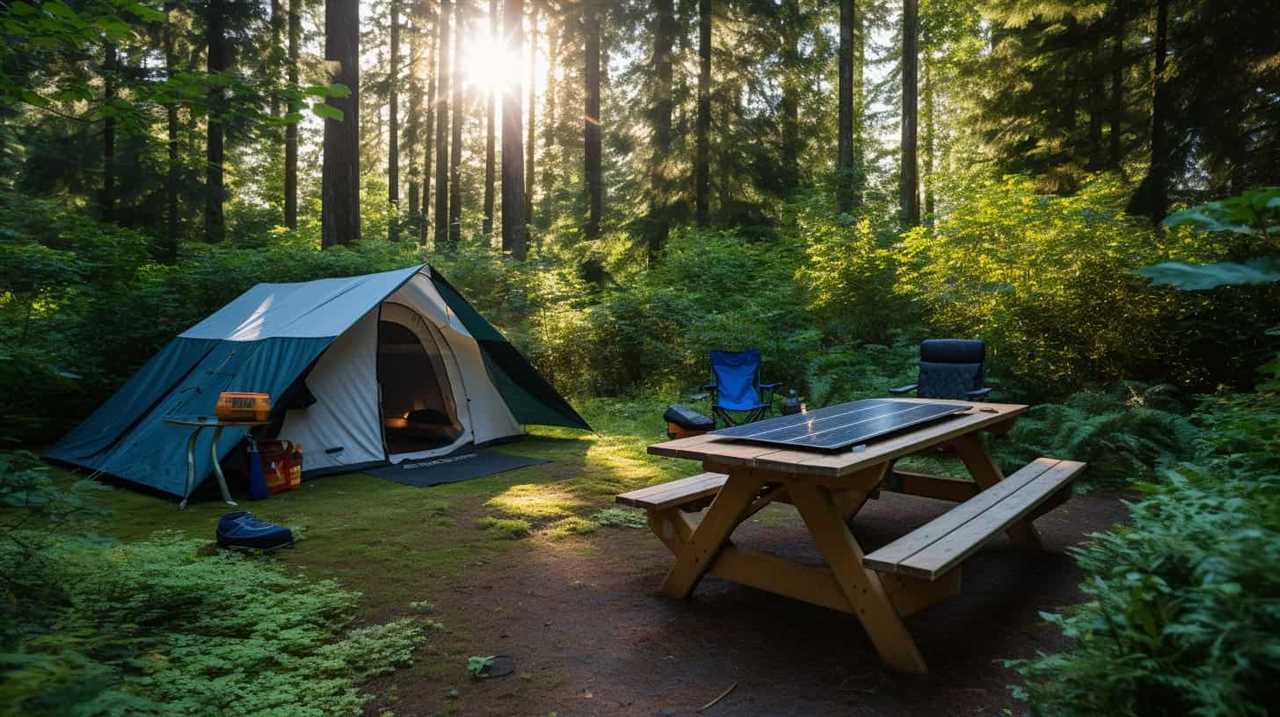
- Solar lanterns: These compact and portable lanterns harness the power of the sun during the day and emit a gentle glow at night, perfect for creating a cozy ambiance in your glamping tent.
- Biodegradable candles: Opt for candles made from natural materials such as soy or beeswax, which not only reduce waste but also create a warm and inviting atmosphere.
- LED string lights: Energy-efficient LED string lights can be powered by a small solar panel, adding a magical touch to your outdoor space without draining excessive energy.
- Solar-powered fairy lights: These delicate and enchanting lights can be wrapped around trees or used to decorate your glamping area, providing a soft and whimsical glow.
- Solar-powered spotlights: Illuminate specific areas of your glamping site, such as pathways or seating areas, with solar-powered spotlights that charge during the day and automatically turn on at night.
Benefits of Solar Power
One of the key benefits of solar power in eco-friendly glamping is its ability to provide sustainable lighting solutions. By harnessing renewable energy from the sun, solar panels can generate electricity to power lights in your glamping setup without relying on traditional energy sources. This not only reduces your carbon footprint but also eliminates the need for batteries or generators, making it a more cost-effective and environmentally friendly option.
Solar-powered lighting solutions offer several advantages for glampers. Firstly, they provide a reliable source of light that can be used both indoors and outdoors, ensuring a well-lit and safe environment. Secondly, solar-powered lights are easy to install and require minimal maintenance, making them ideal for glampers who want hassle-free lighting solutions. Additionally, these lights can be adjusted to different brightness levels, allowing you to create the perfect ambiance for your glamping experience.
Eco-Friendly Camping Essentials
To ensure an eco-friendly glamping experience, it’s essential to equip ourselves with the number one essential: solar-powered lighting solutions. Not only do these lighting solutions rely on renewable energy, but they also provide a warm and cozy ambiance to our campsite.
Here are five must-have solar-powered lighting solutions for your next camping adventure:
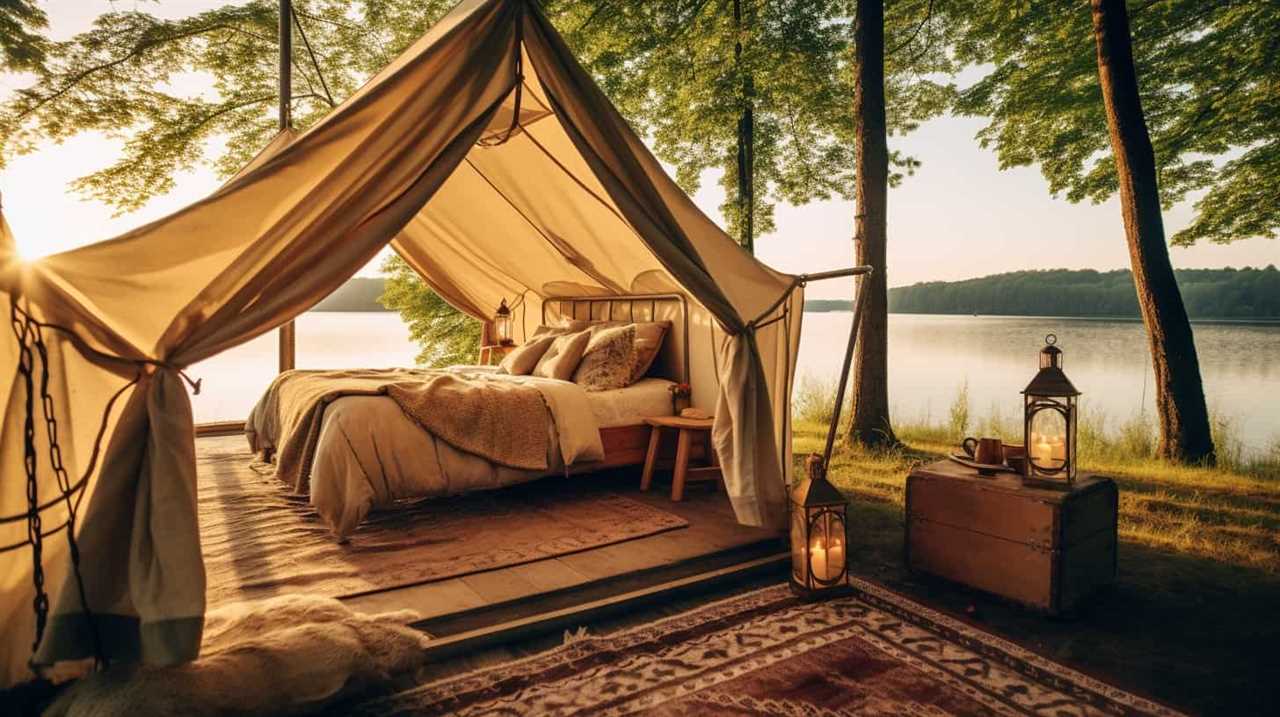
- Solar lanterns: These portable lanterns charge during the day and provide bright light at night, perfect for illuminating the campsite or reading a book in your tent.
- Solar string lights: Add a touch of magic to your glamping experience with solar-powered string lights. Hang them around your tent or in the trees to create a magical atmosphere.
- Solar-powered headlamps: Ideal for hands-free lighting, these headlamps are perfect for nighttime hikes or preparing meals after sunset.
- Solar-powered flashlights: Compact and easy to carry, solar-powered flashlights are a practical choice for navigating the campsite in the dark.
- Solar-powered inflatable lights: These lightweight and waterproof lights can be easily inflated and provide a soft glow, making them perfect for creating a cozy atmosphere inside your tent.
By incorporating these sustainable lighting solutions into your camping gear, you can reduce your carbon footprint and enjoy a more eco-friendly glamping experience.
Now, let’s move on to the next essential item: environmentally-friendly camp furniture.
Environmentally-Friendly Camp Furniture
Choosing environmentally-friendly camp furniture is essential for minimizing our impact on the environment while enjoying the comforts of glamping. When it comes to camp furniture, there are plenty of eco-friendly options that are both stylish and sustainable. From environmentally friendly camp chairs to sustainable picnic tables, you can find furniture that is made from recycled materials, uses minimal packaging, and is designed to be durable and long-lasting.
To help you make an informed decision, here is a table showcasing three eco-friendly camp furniture options:

| Furniture | Material | Features |
|---|---|---|
| Camp Chair | Recycled plastic | Lightweight and foldable |
| Picnic Table | Bamboo | Sturdy and weather-resistant |
| Hammock | Organic cotton | Comfortable and biodegradable |
Water Conservation Strategies
When it comes to water conservation strategies for eco-friendly glamping, there are two key points to consider: efficient shower usage and greywater recycling.
To minimize water waste, it’s important to take shorter showers and turn off the water when not actively using it.
Additionally, implementing a system to collect and reuse greywater can significantly reduce water consumption.
Efficient Shower Usage
By implementing water conservation strategies, we can ensure efficient shower usage during our eco-friendly glamping experience. Here are some practical tips to help you save water while enjoying a refreshing shower:
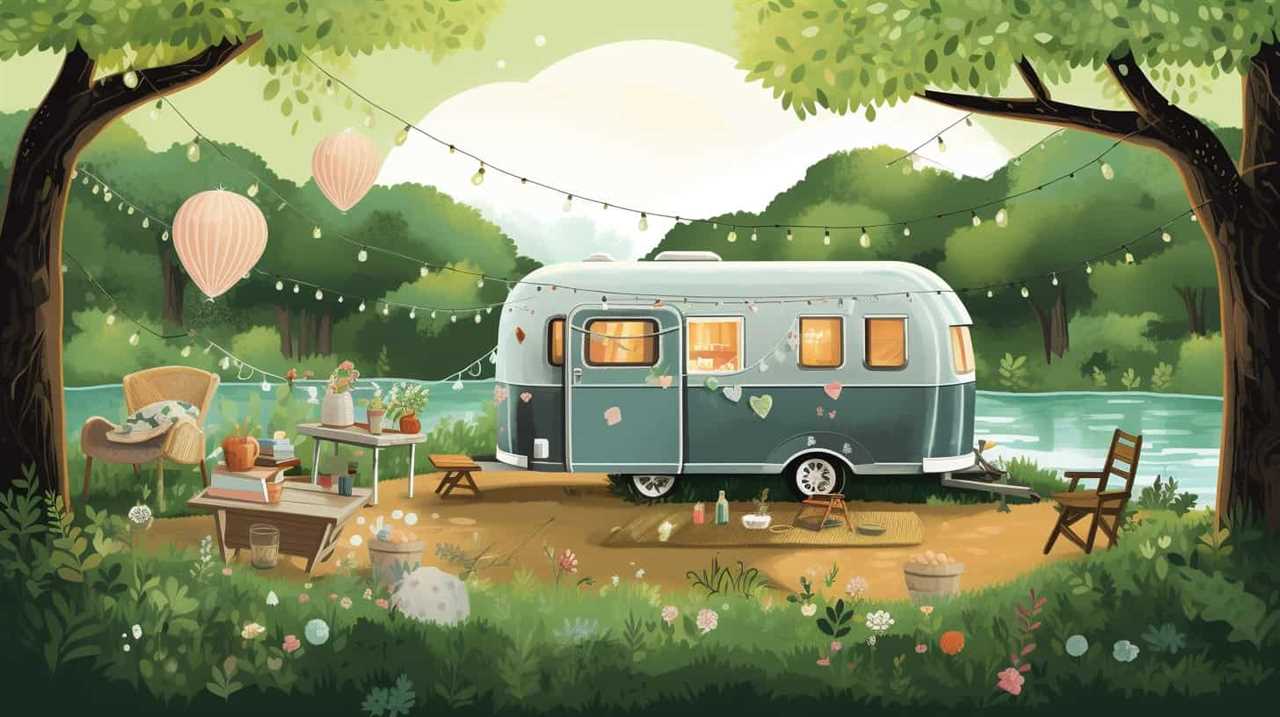
- Install a low-flow showerhead: These eco-friendly showerheads can reduce water usage without compromising water pressure, allowing you to enjoy a satisfying shower while conserving water.
- Take shorter showers: Limit your shower time to conserve water. Keep a timer in the bathroom to help you track your shower duration.
- Use a bucket or basin: Place a bucket or basin in the shower to catch excess water. This water can be reused for flushing toilets or watering plants.
- Turn off the water when not in use: While lathering or shampooing, turn off the shower to avoid wasting water unnecessarily.
- Use eco-friendly toiletries: Opt for toiletries that are biodegradable and free from harmful chemicals. This way, you can enjoy your shower without harming the environment.
Greywater Recycling
To conserve water and promote sustainability during our eco-friendly glamping experience, we can implement greywater recycling as an effective water conservation strategy. Greywater refers to the wastewater generated from our sinks, showers, and laundry activities.
Instead of letting this water go to waste, we can treat and reuse it for other purposes such as irrigation or toilet flushing. Greywater treatment systems are available that filter out contaminants and make the water safe for reuse. These systems can be integrated into sustainable plumbing designs, allowing us to minimize our water usage and reduce our environmental impact.
By recycling our greywater, we can significantly decrease our reliance on freshwater sources and contribute to a more sustainable and responsible glamping experience.
Now, let’s explore another important aspect of eco-friendly glamping: sustainable hygiene products.
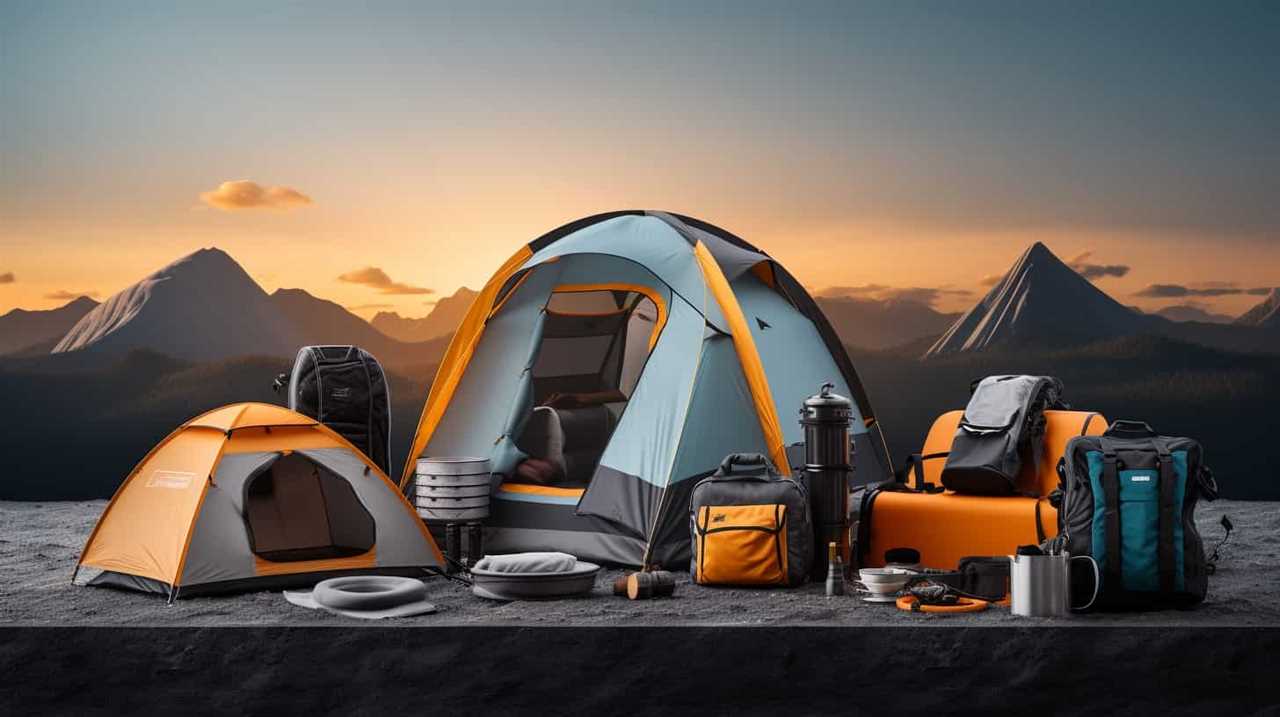
Sustainable Hygiene Products
As we strive to minimize our environmental impact while enjoying the luxuries of glamping, it’s essential to incorporate sustainable hygiene products into our camping routine. By choosing eco-friendly options, we can reduce waste and create a more sustainable camping experience.
Here are five sustainable hygiene products to consider:
- Sustainable period products: Opt for reusable menstrual cups or cloth pads instead of disposable tampons and pads.
- Zero waste toiletries: Look for shampoo bars, conditioner bars, and soap bars packaged in recyclable or compostable materials.
- Bamboo toothbrushes: Swap your plastic toothbrush for a biodegradable bamboo alternative.
- Natural deodorants: Choose deodorants made from natural ingredients and packaged in recyclable containers.
- Reusable wipes: Ditch disposable wipes and opt for reusable ones made from organic cotton or bamboo.
Incorporating these sustainable hygiene products into your glamping routine won’t only reduce your environmental footprint but also provide a more intimate connection with nature.
Leave No Trace Practices
As we continue our eco-friendly glamping journey, we can further minimize our impact on the environment by practicing Leave No Trace principles. These principles serve as guidelines for outdoor enthusiasts to enjoy nature responsibly and leave it as pristine as they found it.
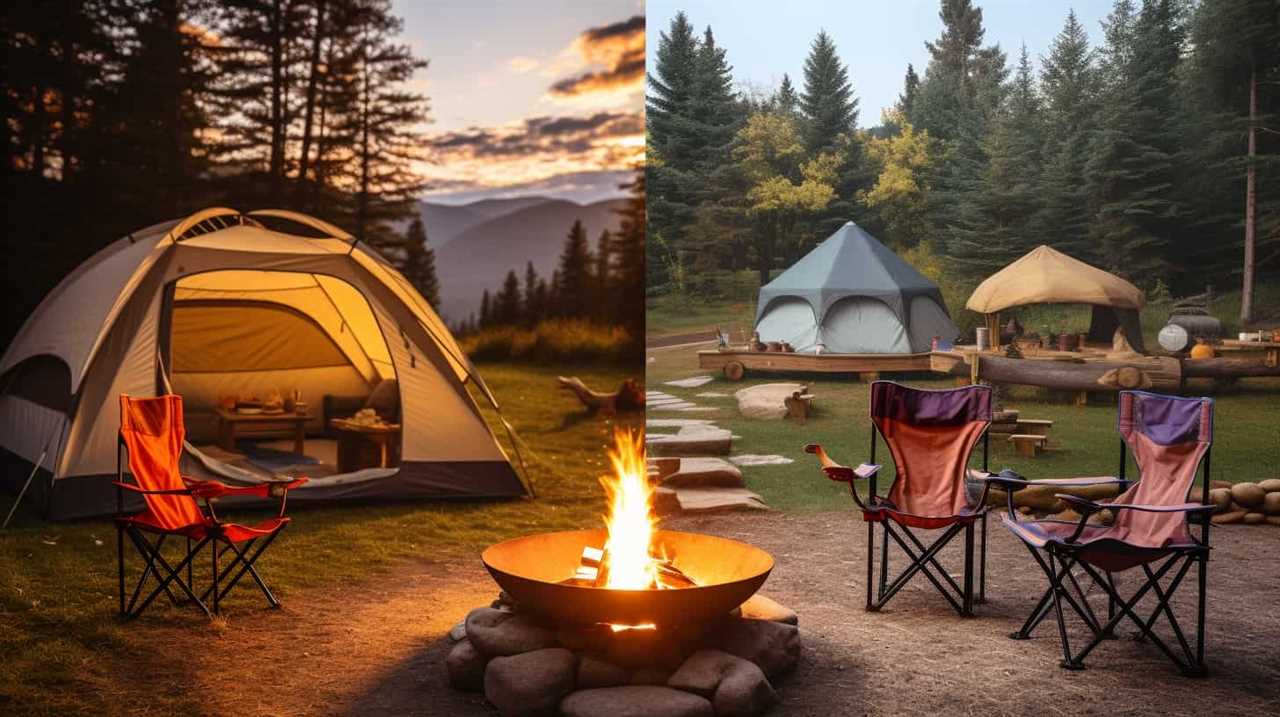
One important aspect of Leave No Trace is eco-friendly waste management. When glamping, it’s crucial to properly dispose of all waste, including food scraps, packaging, and personal hygiene products. This can be achieved by using biodegradable or compostable items and packing out any non-biodegradable waste.
Additionally, it’s important to minimize water usage and avoid contaminating natural water sources.
Frequently Asked Questions
Are There Any Specific Types of Tents That Are Best for Eco-Friendly Glamping?
There are specific types of tents that are best for eco-friendly glamping. Look for tents made from eco-friendly materials like recycled or organic fabrics. Opt for sustainable tent designs that minimize waste and maximize energy efficiency.
What Are Some Tips for Choosing an Eco-Friendly Sleeping Bag?
When choosing an eco-friendly sleeping bag, consider sustainable materials like organic cotton or recycled polyester. Look for insulation options such as recycled down or plant-based synthetic fillings. These choices can help reduce your environmental impact while providing a cozy night’s sleep.
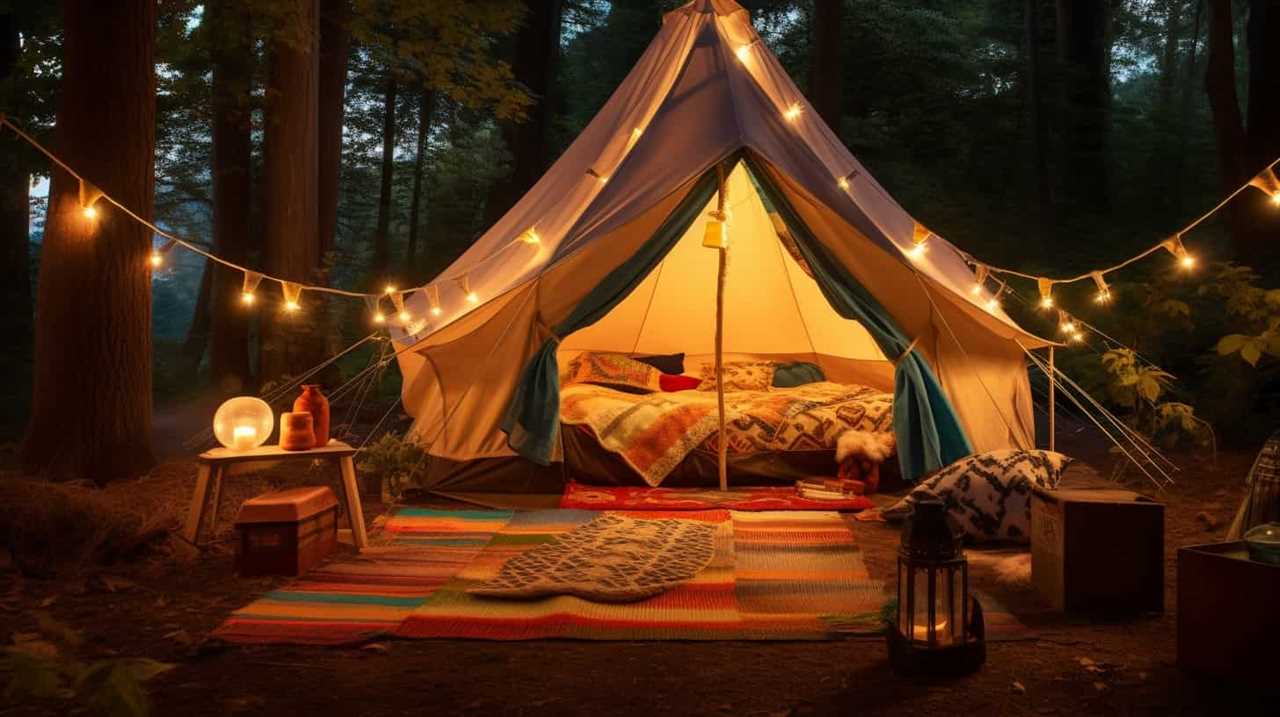
Can You Recommend Any Low-Impact Cookware Options for Eco-Friendly Glamping?
We have some fantastic options for eco-friendly cookware and sustainable camping kitchen equipment. You’ll be amazed at how easy it is to create delicious meals while minimizing your impact on the environment.
How Effective Are Solar-Powered Lighting Solutions for Camping?
Solar-powered lighting solutions for camping have their pros and cons. They provide eco-friendly and renewable energy, but their effectiveness depends on weather conditions. Alternative energy sources, like rechargeable batteries or wind-up lanterns, can be used as backup options.
What Are Some Examples of Environmentally-Friendly Camp Furniture Options?
Eco-friendly camping chairs and sustainable picnic tables are great options for environmentally-conscious campers. These pieces of furniture are made from recycled materials and designed to leave a minimal carbon footprint, making them ideal for eco-friendly glamping experiences.
What Green Equipment Should I Use for Sustainable Glamping?
When considering sustainable glamping practices, it’s important to use eco-friendly equipment. Look for solar-powered lanterns, compostable cutlery, and reusable water bottles. Choose biodegradable soap and cleaning products to minimize environmental impact. Invest in durable, long-lasting gear to reduce waste. Prioritize sustainability in all aspects of your glamping experience.
Conclusion
In conclusion, by embracing eco-friendly glamping and using green equipment, we can minimize our impact on the environment while enjoying the great outdoors.
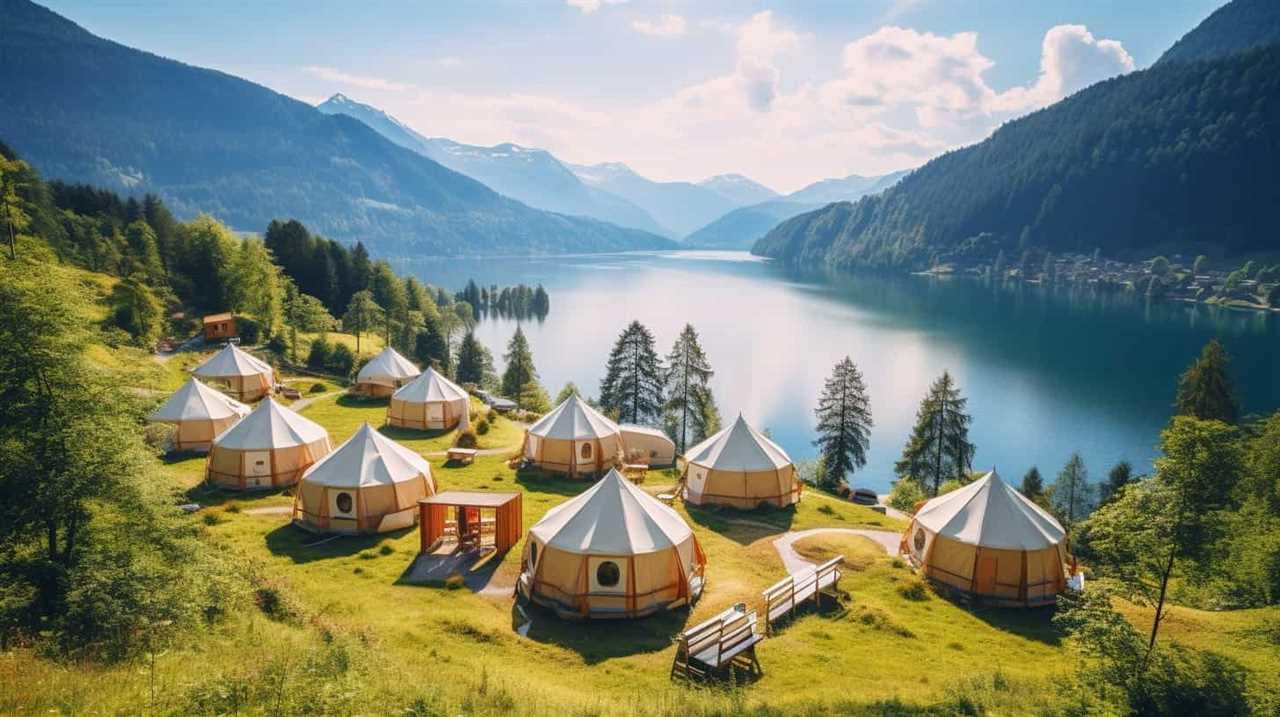
Did you know that using a solar-powered lantern instead of a traditional gas lantern can reduce carbon emissions by up to 1.5 pounds per hour?
Making simple changes like this can make a big difference in preserving our planet for future generations to enjoy.
So why not make your next camping trip a sustainable one?

